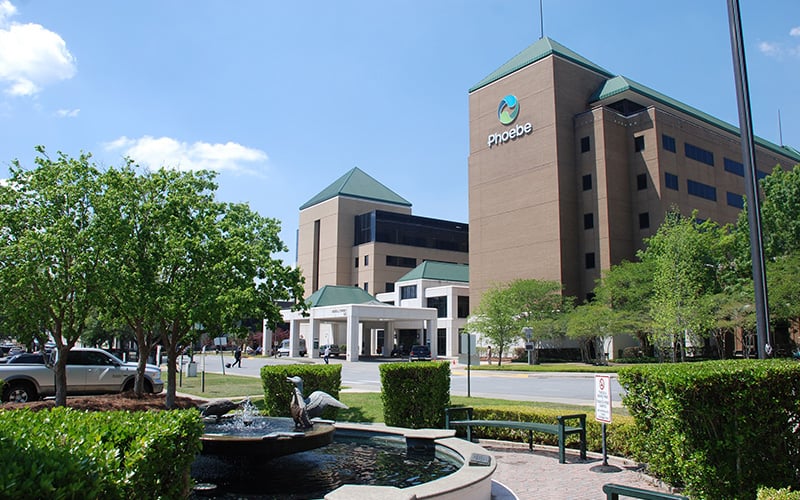
Back in early April, Southwest Georgia was the unlikely location of the world’s fourth-hottest hotspot for COVID-19. Here at Phoebe Putney Health System, the sole provider in this semi-rural corner of the state, we saw our coronavirus patient admissions skyrocket from one to 150 in late March. You may have seen Scott Steiner, our CEO, on CNN, calling attention to Phoebe’s dire need for personal protective equipment after clinicians burned through a six-month supply within a week.
When that first positive patient was admitted, our leadership team initiated Phoebe’s disaster recovery plan, which focuses on resilience and redundancy. Through biannual emergency drills and several weather-related emergencies, we’ve honed our preparedness skills to ensure all staff in our five-hospital system are ready for the next potential crisis. Our practice of, and experience with, disaster planning and recovery was key to successfully managing the surge.
Although preparedness drills are time consuming and may seem trivial when your hospital is running smoothly, their value during emergencies is incalculable. Here are five recommendations to help mitigate crises:
1. Practice establishing a command center.Setting up an Incident Command System as part of a disaster drill enables staff to practice routine skills under pressure. With enough practice, these skills become second nature -- freeing them to focus on the unique challenges that real crises present.
Leadership during practice drills and emergencies is essential. During the surge, our C-suite executives and medical directors manned Phoebe’s main command center and four facility-specific command centers seven days a week. They served as decision-makers and subject matter experts, overseeing all emergency operations.
2. Prepare to convert care settings.The ability to stand up and/or convert care settings is imperative, and enabled Phoebe to treat many more patients in the community without having to transfer them to another region. In the early months of the pandemic, we stood up an underutilized 75-bed facility as our designated COVID-19 care setting, complete with negative pressure rooms and full network access to the EHR, within two weeks.
3. Leverage your EHR.The EHR is involved in all aspects of care and has to function flawlessly. Our EHR was robust enough to meet mandated reporting requirements and provide clinical decision support, yet flexible enough to accommodate fast, frequent changes to COVID-19 standards of care, documentation and order sets. An intuitive user interface enabled temporary staff to quickly learn the software. Once these clinicians were on the floors, Phoebe’s clinical informatics team supported them via remote work capabilities.
4. Keep your community informed.Be transparent with patients and the community. To give patients a trusted, accurate source for information, Phoebe posts a dashboard on our website including the total number of COVID-19 patients at our hospitals, the total number of inpatients recovered, and the total deaths attributed to (or related to) COVID-19. These dashboards were posted daily until June, when the curve flattened. Since then, these updates have been posted weekly, and will continue for the foreseeable future.
5. Conduct an after-action review.When the dust settles, meet with department heads, medical leadership, and executives to review your response. Compile policies, procedures, and instructions into a manual to prepare for another potential surge, natural disaster, or crisis situation. Phoebe’s senior leaders met for several hours to conduct an after-action review of the spike, resulting in our Readiness Playbook. Going forward, we’ll use the Readiness Playbook in our biannual disaster preparedness exercises.
Disaster preparedness enabled us to build resilience and redundancy, essential for juggling competing priorities amid concerns for employee well-being and the health of our close-knit community. Conducting twice-yearly disaster drills will provide opportunities for your staff to practice and hone their skills in preparation for future crises.
Visit our COVID-19 resource page and see how MEDITECH is supporting healthcare organizations during the pandemic.




